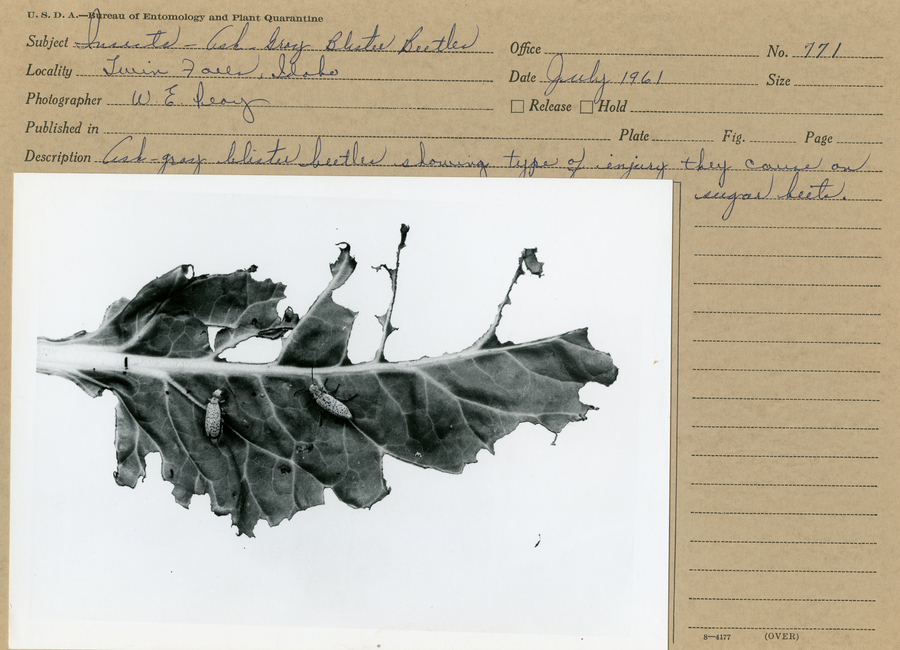Plant, Soil, and Entomological Sciences Records
Images of insects and parasites photographed and studied for their roles in plant disease
Digital Collection-Insects and Parasites
By Kate Morrison
Plant pathology is a specialized field focused on the study of plant diseases. This field is vital to protecting our worldwide food security from pests and disease. This highly interdisciplinary science encompasses knowledge of botany, microbiology, molecular biology, crop science, soil science, ecology, genetics, biochemistry, physiology, and entomology.1
This digital collection was composed to highlight the entomological work of the College of Agricultural and Life Sciences at the University of Idaho between 1935-1966. Entomology in plant pathology concerns the role of insects in crop production and landscapes including pollination and disease transmission. Plant diseases can be transmitted through agents known as vectors. Vectors are organisms that have the ability to introduce a pathogen to plants (Purcell and Almeida, 2005) 2.
56 photographs were chosen to create a digital collection. The digital collection includes photographs of insects and parasites studied as vectors for plant disease within the collection. The photographs show different life stages of the vectors and their environment for invasion of plant material. Digital natural history and biological collections have been on the rise in recent years as important resources across several research fields. These collections serve as important data banks for research into documenting species’ population and diversity, improving public health, enhancing agricultural practices, ensuring food security, and monitoring global changes (Short et al., 2018) 3.
The University of Idaho is the only university in the Pacific Northwest and Intermountain West offering an entomology degree. The University of Idaho has a responsibility to display and communicate entomological research to a boarder audience of entomologists and other researchers. This digital collection is intended to highlight the preservation and collection of this historical work. 4
It is estimated that fewer than 2% of insect specimens in current collections have been digitized. Digitalized collections can help enable researchers across the world to identify and investigate knowledge gaps within their areas of expertise. Digitalized collections have led to the discovery of insects once thought to be extinct and have facilitated the advancement in ecological niche modeling (Short et al., 2018). This digital collection hopes to serve as a valuable and historical resource to the underrepresented data pool of entomology.
More detailed information about the collection and its contents can be found in the collection’s finding aid
Sources
-
“What is Phytopathology or Plant Pathology”, The American Phytopathological Society (APS). ↩
-
Purcell, A.H. and Almeida, R.P., 2005. Insects as vectors of disease agents. Encyclopedia of plant and crop science, 10, pp.1-5. ↩
-
Short, A.E.Z., Dikow, T. and Moreau, C.S., 2018. Entomological collections in the age of big data. Annual Review of Entomology, 63(1), pp.513-530. ↩
-
Department of Entomology, Plant Pathology and Nematology, University of Idaho. ↩
Technical Credits - CollectionBuilder
This digital collection is built with CollectionBuilder, an open source framework for creating digital collection and exhibit websites that is developed by faculty librarians at the University of Idaho Library following the Lib-Static methodology.
Using the CollectionBuilder-CSV template and the static website generator Jekyll, this project creates an engaging interface to explore driven by metadata.

